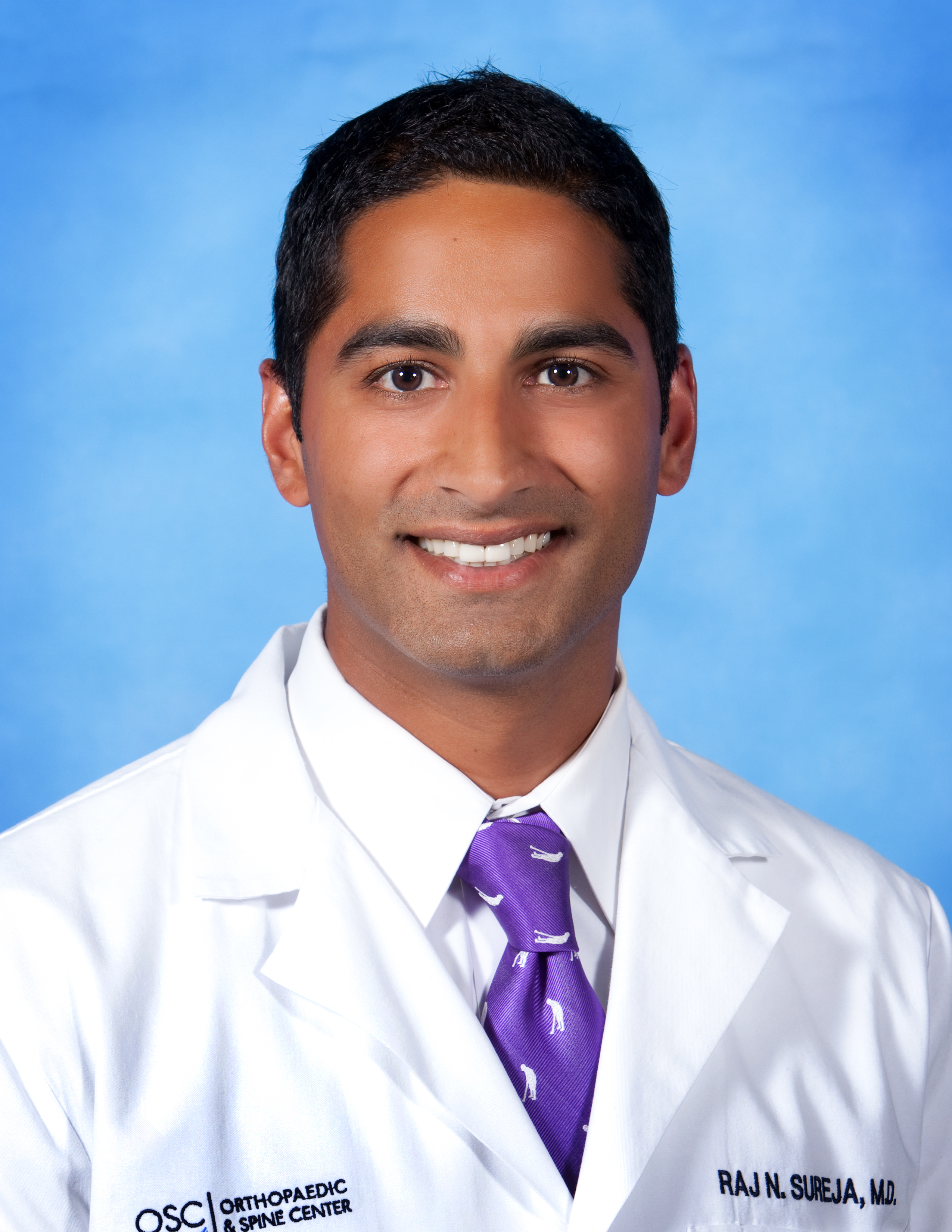At the Orthopaedic and Spine Center of Newport News (Va.), physicians use nonsurgical stem cell therapy, platelet rich plasma therapy and prolotherapy to treat ligament and tendon damage, joint arthritis and sports injuries. The center has offered these regenerative medicine procedures since June 2015.
Raj N. Sureja, MD, an interventional pain management specialist and one of three physicians who practice regenerative medicine at the center, discusses the benefits and challenges of offering these treatments.
medicine at the center, discusses the benefits and challenges of offering these treatments.
Question: How did the center decide to add a regenerative medicine program?
Dr. Raj N. Sureja: About three years ago we started getting questions from patients who were hearing about stem cell treatments in other parts of the country. I think the impetus for us was really when several local high school football players were sent to Colorado where there's a stem cell center. The center helped those who wanted to get back on the field faster, but who also wanted to avoid surgery — and the folks that visited the center were getting such good results. We felt we had to offer that type of option, so we did our research on what they were doing. We realized that regenerative medicine was something we could incorporate into our center in Virginia. At the time, there wasn't anyone else offering these treatments in our area, and we really felt this was a need that was not being met; I believe we were the first in our area to offer amniotic and bone marrow aspirated stem cell treatments.
Q: What benefits can regenerative medicine provide patients, beyond the services of traditional orthopedic care?
RS: Traditional orthopedic care focuses on repairing or removing damaged tissue, such as cutting out cartilage that may be torn — in joint replacements, the entire joint is removed and replaced with an artificial joint. Regenerative medicine actually works to repair the damage, slow down the degeneration or naturally eliminate chronic inflammation. Regenerative medicine techniques are often an option for folks who do not want surgery, regard surgery as a last option or cannot go under anesthesia to have surgery, due to a medical condition like heart disease or lung disease. Regenerative medicine is a great option for these folks.
Traditional orthopedic care also uses cortisone, which can cause tissue damage over time. By using stem cells and platelet rich plasma, either with patients' own cells or with outside stem cells, you can repair the problem without causing any further side effects. Our initial results from the year-and-a-half that we've had this program have already been really good. We've seen patients back for their one-year follow up appointment, and they're still doing much better with both pain and function.
Q: What is the most important lesson you learned while putting the program in place?
RS: For regenerative medicine, both the platelet rich plasma injections and stem cell injections are considered experimental by most insurance companies. Our biggest challenge has been convincing the insurers that this is a valuable option for patients that should be covered.
Right now, there are plenty of retrospective studies and case reports that show the benefit of regenerative medicine. I think what's really going to help us in the coming years are the prospective studies and the randomized control trials that are starting to come out, which are showing the benefit of regenerative medicine compared with surgery or cortisone injections. I think that will help us get coverage for these procedures over time.
Another challenge, of course, is cost for the patient — not everybody can afford to pay out of pocket for this option, but we're hoping that if we are able to show the insurance companies that we're getting great results, and avoiding surgery, I think in the long-run this will be a cost-savings decision for insurers.
Q: The FDA recently held a public hearing about stem cells and regenerative medicine, to receive feedback on the guidelines it's developing. What role do you think the FDA should play in shaping the landscape for regenerative medicine research and programs?
RS: I think the FDA plays an important role, because it prevents providers from essentially offering "snake oil" without safety or efficacy data. The FDA ensures people are conducting appropriate randomized control trials that show the benefit of the therapy that's being proposed. For regenerative medicine to be done safely, you have to have regulations in place that ensure the treatments we're offering, like amniotic stem cells, are processed safely under strict standards at an FDA-regulated laboratory.
As with anything in medicine, we won't know the long-term effects for quite some time, as far as how long these procedures will last and what other uses there are for stem cells, like Alzheimer's, or spinal cord injury or cancer. We need research to be conducted under FDA guidelines and for the cells to be obtained safely at an FDA-regulated laboratory, but if those guidelines and conditions are met, then stem cells can be an effective treatment option. It's a pretty exciting time to be involved with stem cell treatment — we're shaping the future of how these treatments are used.


